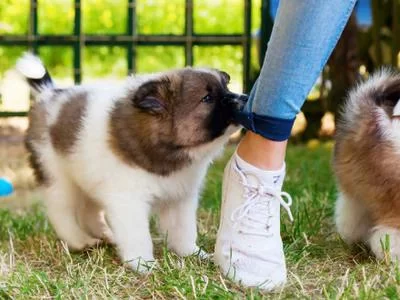Understanding Why Dogs Snap at Other Dogs
It can be alarming when your dog snaps at other dogs, especially in social situations or during walks. While it’s natural for dogs to communicate through body language, snapping can be a sign of fear, dominance, or anxiety. Understanding the root cause of your dog’s behavior is the first step in correcting it. In this article, we’ll explore why dogs snap at other dogs and provide effective strategies for stopping this behavior. Whether your dog is a puppy or an adult, the techniques shared here can help improve their social interactions.
Common Reasons Why Dogs Snap at Other Dogs
Before jumping into solutions, it’s important to understand why dogs might snap at other dogs in the first place. There are several potential reasons for this behavior, and identifying the underlying cause is essential for addressing it effectively.
1. Fear and Anxiety
One of the most common reasons dogs snap at other dogs is fear. This could stem from a lack of socialization or a past negative experience with other dogs. When a dog feels threatened, it may react defensively by snapping or growling. Anxiety can also play a role, especially in unfamiliar environments.
2. Territorial Behavior
Dogs are naturally territorial animals, and they may snap at other dogs to protect their space, whether that’s their home, yard, or even their human family members. Territorial aggression often leads to snapping as a way for the dog to assert dominance.
3. Lack of Socialization
Puppies who haven’t been properly socialized may struggle to interact peacefully with other dogs. This lack of exposure to different dogs can lead to anxiety, which often manifests as snapping when they encounter another dog.
4. Dominance or Resource Guarding
Dogs may snap at other dogs if they feel the need to assert dominance or protect valuable resources, such as food, toys, or attention from their owner. This behavior is often seen when multiple dogs are in close proximity to each other and there is a competition for resources.
Effective Strategies to Stop a Dog from Snapping at Other Dogs
Now that we’ve explored why dogs snap at other dogs, let’s discuss some practical strategies you can use to stop this behavior. With patience, consistency, and proper training, you can help your dog develop better social skills and reduce aggressive behavior.
1. Early Socialization is Key
One of the most effective ways to prevent a dog from snapping at other dogs is through early socialization. Start socializing your puppy with other dogs as soon as possible. Expose them to a variety of environments, dogs, and situations to help them feel comfortable around others. If your dog is an adult and has not been socialized, it’s still possible to help them learn to behave appropriately with other dogs, but it may take more time and patience.
2. Positive Reinforcement Training
Using positive reinforcement to reward good behavior is one of the most powerful tools in dog training. When your dog interacts calmly with other dogs, reward them with treats, praise, or toys. This reinforces the idea that calm behavior around other dogs is rewarding. Over time, your dog will associate positive outcomes with behaving appropriately in social situations.
3. Controlled Exposure and Desensitization
If your dog is fearful or anxious around other dogs, controlled exposure and desensitization can help. Start by introducing your dog to calm, friendly dogs from a distance, gradually decreasing the space between them over time. This method helps your dog become more comfortable around other dogs without feeling overwhelmed. Always ensure that the dogs involved in the exposure are well-behaved and not overly dominant or aggressive.
4. Teaching Impulse Control
Teaching your dog impulse control can help reduce snapping behavior. Start by practicing basic obedience commands like "sit," "stay," and "leave it." These commands teach your dog to focus on you and remain calm in various situations. When your dog feels the urge to snap, redirect their attention to a command or task. This can help them manage their impulses and reduce aggressive reactions.
5. Seeking Professional Help
If your dog’s snapping behavior persists or escalates despite your efforts, seeking help from a professional dog trainer or behaviorist may be necessary. They can assess your dog’s behavior and provide tailored advice or training techniques to address the issue. A professional can also help with resource guarding or more complex behavioral problems.
Real-Life Example: Training Success with a Reactive Dog
One of the most memorable cases I encountered involved a dog named “Rex,” a two-year-old shepherd mix who had a history of snapping at other dogs during walks. Rex’s owner had tried several methods to curb the behavior, but nothing seemed to work. After evaluating Rex’s behavior, we discovered that he was reacting out of fear and territoriality. We created a training plan that included gradual exposure to other dogs, positive reinforcement for calm behavior, and impulse control exercises. Over time, Rex became more confident and relaxed around other dogs, and his snapping behavior decreased significantly. Rex’s success story highlights the power of patience and consistent training when it comes to modifying unwanted behaviors.
How Hidden Brook Veterinary Can Assist
If you’re struggling with a dog that is snapping at other dogs, Hidden Brook Veterinary is here to help. Our team of experienced professionals can provide expert advice, training resources, and even recommend qualified trainers who specialize in behavioral issues. We also offer a range of products that can support your dog’s training and well-being. Don’t hesitate to reach out for guidance – we’re committed to helping you and your dog live a harmonious life together.












